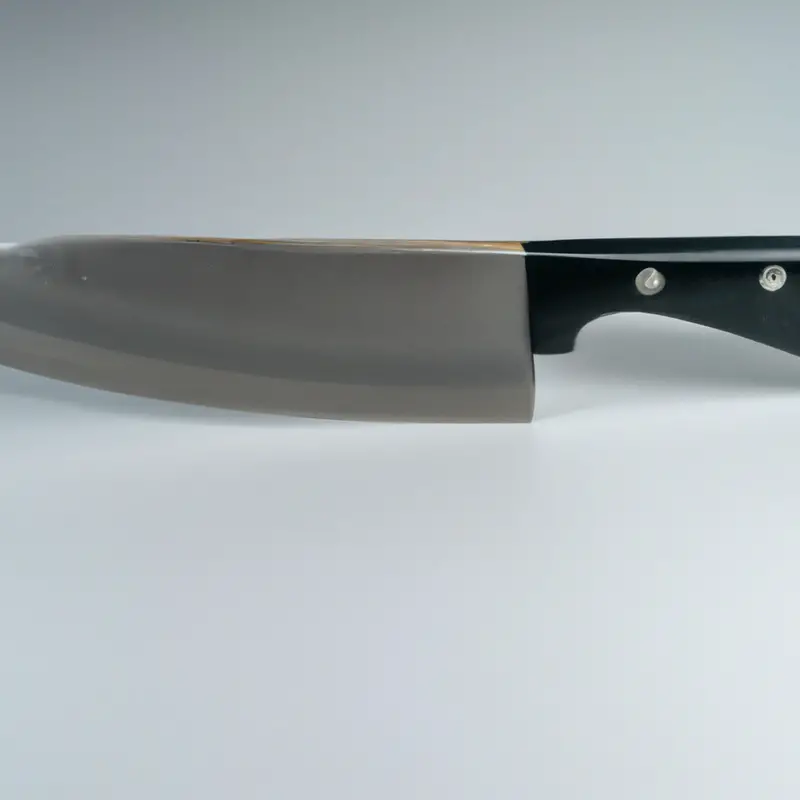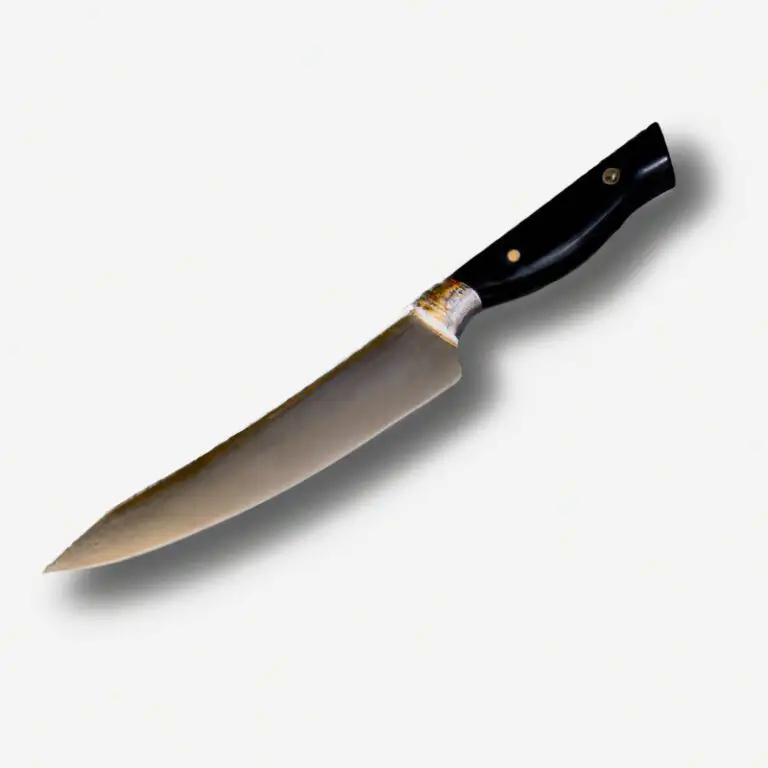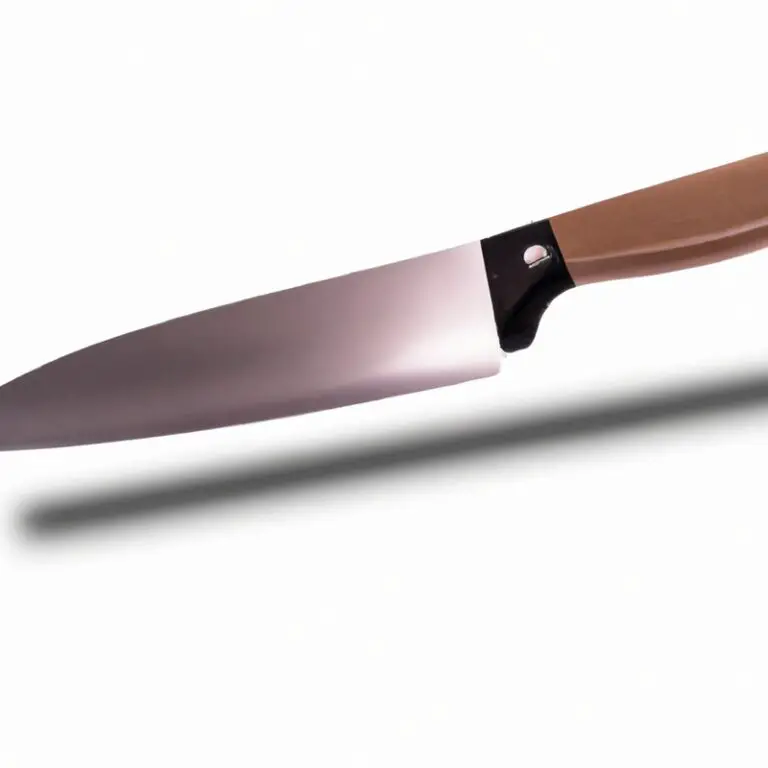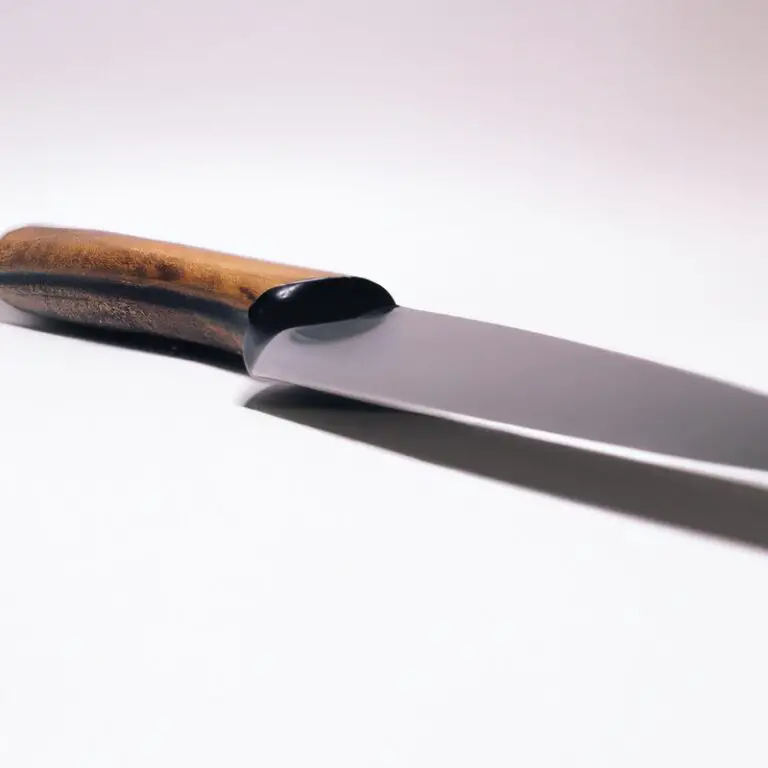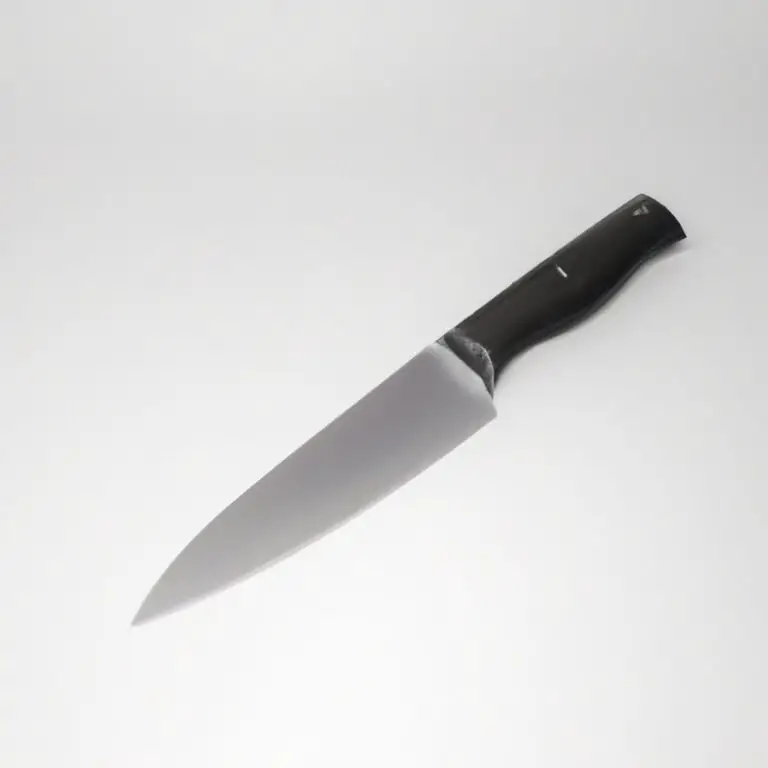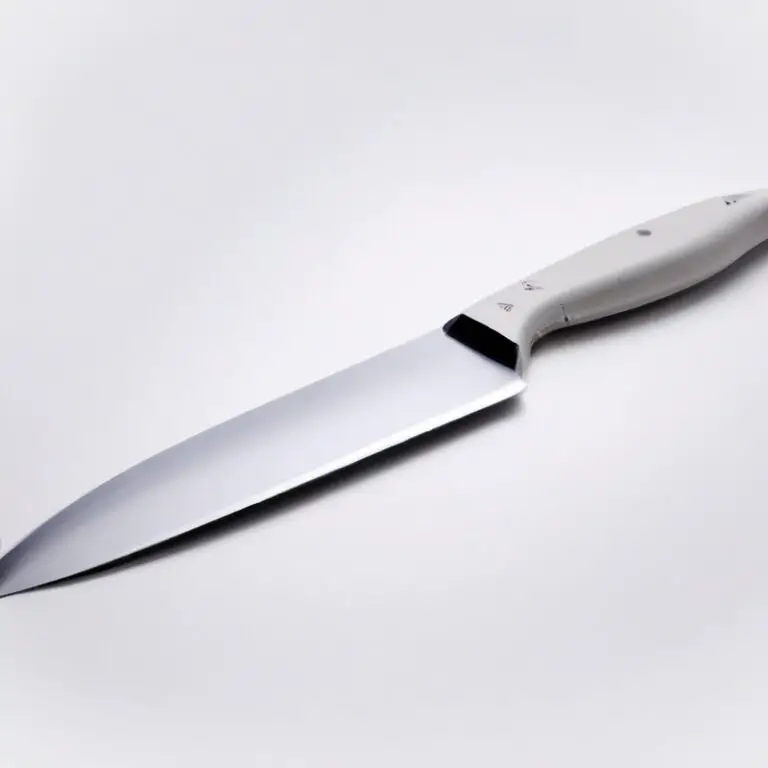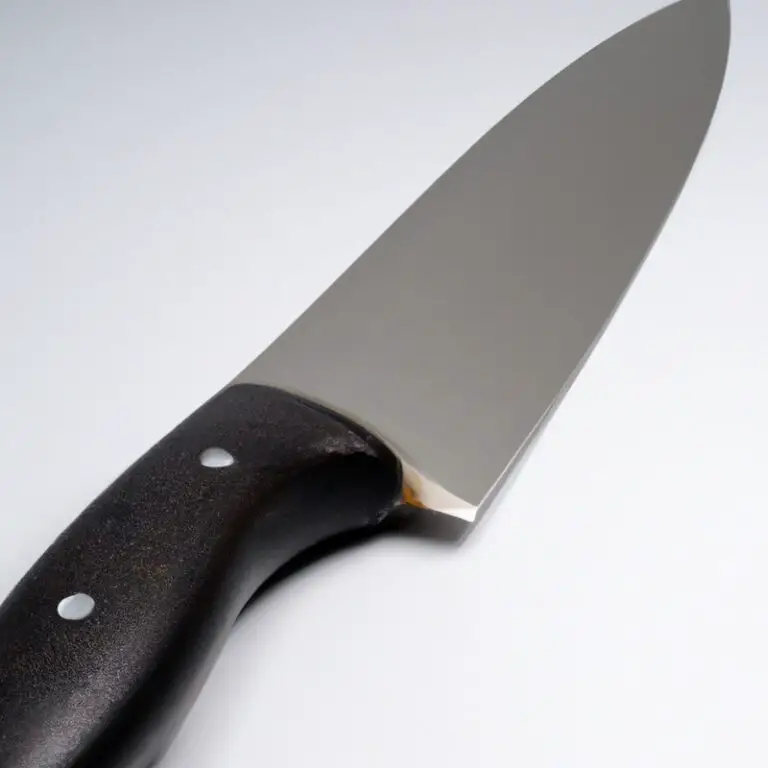How To Prevent Blade Chipping On a Chef Knife? Easily!
Key Takeaways:
- Blade chipping can be prevented by avoiding contact with hard surfaces and improper cutting techniques.
- Regular maintenance and sharpening of the chef knife can prevent chipping and extend its lifespan.
- Investing in a high-quality, durable chef knife can reduce the likelihood of blade chipping.
- Proper storage and handling of the chef knife can also prevent damage to the blade.
As a chef, your knife is your most valuable tool, and blade chipping can be a headache. It not only compromises the knife’s performance but also poses a potential danger.
However, preventing blade chipping is possible by adopting proper sharpening techniques, using the right cutting board, choosing the right knife for the job, and adjusting your cutting technique.
Honing your knife regularly and proper maintenance can help prevent blade chipping. Additionally, high-temperature cooking and incorrect storage can damage the blade, leading to chipping.
Let’s dive in and explore these preventive measures to preserve your chef knife’s longevity.
| Technique | Explanation |
|---|---|
| Proper cutting surface | Use a cutting board made of softer materials, such as wood or plastic, instead of harder surfaces like stone or metal. |
| Proper cutting technique | Use the right cutting technique, such as rocking motion, instead of slamming the knife down on the cutting board. |
| Regular honing | Frequently hone the blade with a honing steel to keep the edge straight, which helps prevent chipping. |
| Regular sharpening | Sharpen the blade regularly, but avoid using a mechanical sharpener or pulling the blade through a slot, as this can cause the blade to chip. |
| Proper storage | Store the knife properly, such as in a knife block or on a magnetic strip, to prevent it from banging against other utensils or surfaces. |
Understanding the causes of blade chipping on chef knives
Blade chipping is a common problem for chef knives. It occurs when a piece of the blade chips off, leading to a dull and unsafe cutting tool.
The causes of blade chipping can vary, but one of the most common reasons is using inappropriate cutting boards.
Hard surfaces such as glass or ceramic can cause chipping, while softer materials such as wood or plastic are better choices. Other common causes include using a dull knife, high-temperature cooking, incorrect cutting techniques, and inadequate maintenance and care.
Knowing the causes of blade chipping is crucial in preventing it and ensuring your chef knife remains a reliable cutting tool.
How proper sharpening techniques can prevent blade chipping
Proper sharpening techniques are crucial to prevent blade chipping on a chef knife. A dull blade requires more force to cut, causing excessive wear and tear, resulting in chips or nicks.
Sharpening your knife regularly using a sharpening stone or honing rod helps maintain the blade’s sharpness, reducing the amount of force required to cut through materials.
It also results in a smoother cutting motion, preventing excessive pressure on the blade, which can lead to chips. Blunt knives can be more dangerous than sharp ones because they require more force, leading to an increased risk of losing control and causing accidents.
Always ensure you use proper sharpening techniques to keep your chef knife sharp and reduce the risk of blade chipping.
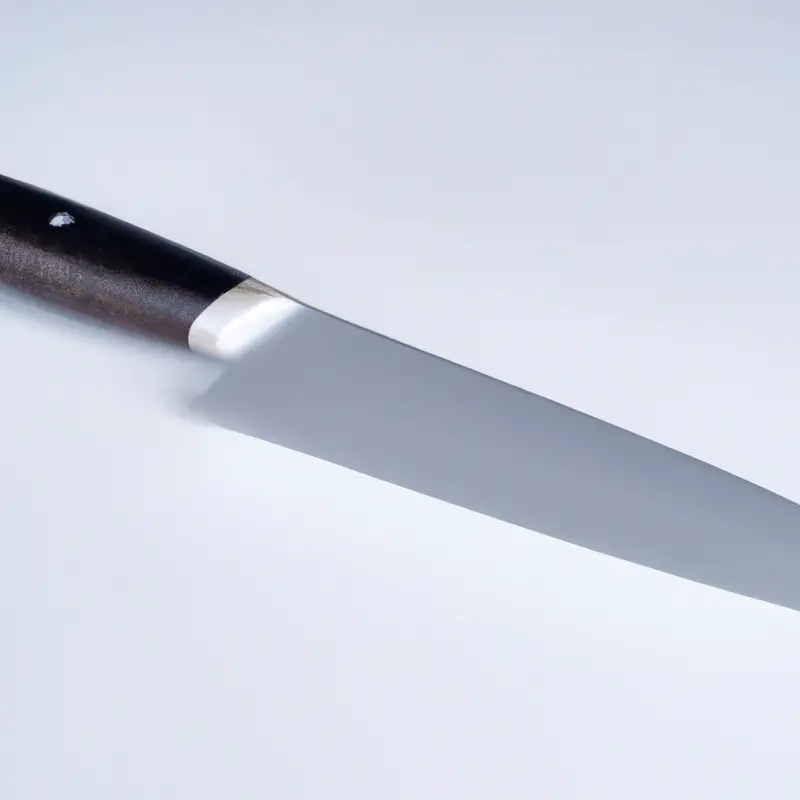
The importance of using the appropriate cutting board to prevent blade chipping
Using the appropriate cutting board is essential in preventing blade chipping. Cutting on a hard surface like marble or glass can result in a damaged knife blade.
Instead, opt for a cutting board made from softer materials like bamboo, wood or plastic.
These materials offer a bit of give that helps to prevent the blade from chipping. Furthermore, ensure that the surface of the cutting board is clean and free from debris that can cause friction and damage the blade.
Lastly, avoid using the same cutting board for multiple purposes, especially when cutting harder materials like meat, as this transfers debris to the board that can damage the blade during the next use.
By using the appropriate cutting board, you can prevent blade chipping and extend the longevity of your chef knife.
How to choose the right knife for the task at hand
When choosing the right knife for a specific task, it is crucial to consider the knife’s size, weight, and shape. A chef’s knife is a versatile option that can handle most tasks, but specialized knives, such as a bread knife or a boning knife, may be necessary for specific tasks.
Consider the materials used to make the blade, as softer metals are more susceptible to chipping.
Additionally, choose a knife with a comfortable handle that provides a secure grip to prevent accidents. Finally, always choose a knife that fits within your budget, as high-end knives may not always be necessary for your needs.
The benefits of honing your knife regularly to prevent blade chipping
Regular honing of a chef knife provides many benefits that go beyond just maintaining its sharpness. It also plays a critical role in preventing blade chipping.
Honing realigns the blade’s edge, reinforcing it against the constant banging and rolling caused by use.
This prevents the blade from bending, cracking, or chipping. Honing is a quick and straightforward process, and it’s recommended that a professional chef knife be honed before each use.
A honing rod or a honing stone is used to realign the blade’s edge, ensuring it remains straight and sharp.
By regularly honing your chef knife, you’ll extend the blade’s life, prevent chipping, and maintain a razor-sharp edge. This means you won’t need to sharpen your knife frequently, saving you time and money.
Additionally, honing regularly maintains the knife’s balance, making it easy to use and comfortable.
In summary, honing your knife regularly is essential for preventing blade chipping, saving time and money, and maintaining a comfortable balance.
The role of maintenance and care in preventing blade chipping
Proper maintenance and care play a crucial role in preventing blade chipping on chef knives. It is important to clean and dry the knife after every use, preferably by hand.
Using a dishwasher can damage the blade and cause it to chip.
Regular honing can keep the knife sharp and reduce the amount of pressure needed during cutting, preventing chipping. It is also recommended to store the knife in a sheath or a block to protect the blade from damage.
Finally, it is essential to avoid using the knife on hard surfaces, such as countertops or cutting boards made of glass, stone or ceramic as they create unnecessary stress on the blade, causing it to chip.
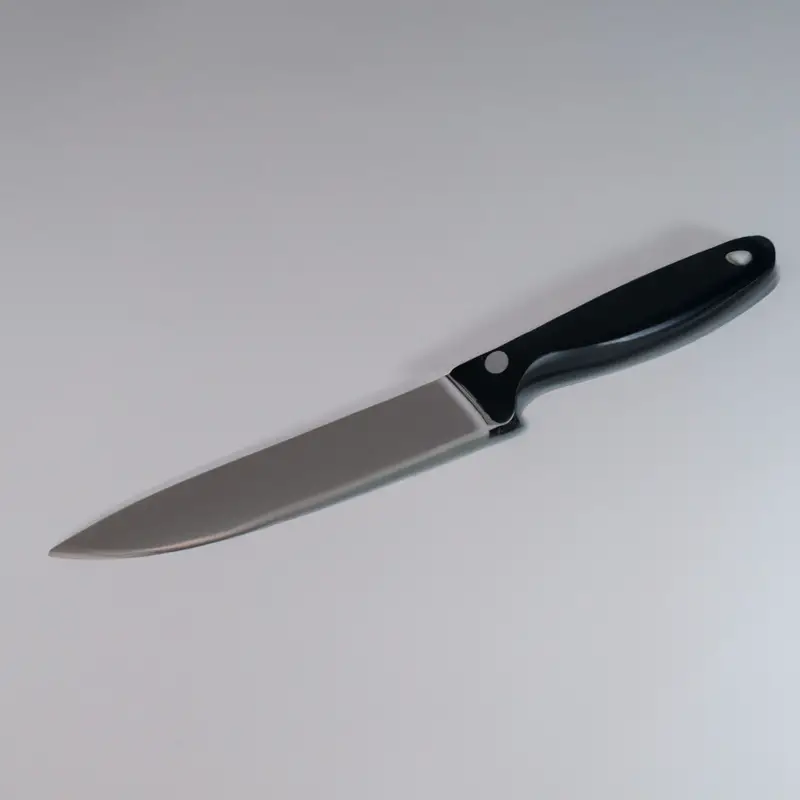
How to adjust your cutting technique to prevent blade chipping
To adjust your cutting technique and prevent blade chipping, there are some essential things to keep in mind:
- Angle your knife correctly: You need to hold your knife at the correct angle during cutting, avoiding an acute angle. Using an acute angle for cutting harder food items increase the chances of blade chipping. Moreover, refrain from using excessive force on the blade, and let the knife do the job itself.
- Use a Sawing motion: Avoid thrusting the knife vertically downwards on the cutting board. Instead, try using a gentle sawing motion when cutting harder items such as carrots or squash.
- Use the right hand-position: Position your hand closer to the blade while making agile movements, cutting the food item into sustained and controllable blade routes.
- Alternate your cutting board: Choosing the right cutting board can be essential in preventing blade chipping. Switch between a wooden board, a plastic board, or a rubber board; it’ll have a significant effect on your blade’s longevity.
By taking these necessary steps, adjusting your cutting technique will help in preventing blade chipping, resulting in a sharper and useful knife.
The impact of high-temperature cooking on knife blades and how to mitigate it
High-temperature cooking can have a significant impact on the blade of a chef knife. The intense heat can cause the metal to soften, making it more vulnerable to damage such as chips and cracks.
To mitigate this issue, it is important to avoid exposing the knife to high temperatures for extended periods.
When cooking with high heat, switch to a different knife that is better suited for the task, such as a cleaver or a serrated knife. Additionally, it is important to avoid cutting through bones or frozen foods with a chef knife as this can also damage the blade.
Proper storage, regular honing, and sharpening can help maintain the blade’s integrity and prevent chipping.
Choosing the right storage method to prevent blade chipping
Proper storage of a chef knife is crucial in preventing blade chipping. To avoid this, store knives in a knife block, magnetic holder, or in a sheath.
The knife block should have slots that are wide enough to fit the blade and keep the blade edge protected from other knives in the same block.
A magnetic holder is a great option for those with limited counter space as it can be mounted to a wall. Lastly, a sheath is a good option for those who need to transport their knives frequently.
It is important to note that storing knives in drawers without a sheath can lead to the blade being nicked by other utensils, so avoid doing so.
The impact of using a dull knife on blade chipping and how to prevent it
Using a dull knife is one of the key factors that contribute to blade chipping. A dull blade requires more force and pressure to cut through food, which puts undue stress on the blade’s edge and can cause it to chip or break.
To prevent blade chipping, it is important to regularly sharpen and maintain your knife.
You can use a sharpening stone or honing rod to keep the blade sharp. Additionally, it is essential to avoid cutting hard or frozen food with a dull knife.
Instead, use a serrated knife or a meat cleaver for such tasks.
Remember that the key to preventing blade chipping is to use a sharp knife that’s appropriate for the task at hand.
Final Verdict
The causes of blade chipping on chef knives can be multifaceted, but with the proper sharpening techniques, appropriate cutting boards, and regular honing and maintenance, they can be prevented. Additionally, adjusting your cutting technique, being mindful of high-temperature cooking, and choosing the right storage method can also aid in preventing blade chipping.
It’s important to note that the impact of using a dull knife cannot be overlooked, and preventing blade chipping is just one of the many benefits of maintaining a sharp knife.
By implementing these practical takeaways, your chef knife will remain an essential tool in your kitchen arsenal for years to come. Remember, investing in a quality knife requires an investment in its care and maintenance.
Trust in the reliability of this information to keep your knife sharp and prevent blade chipping in the future.

